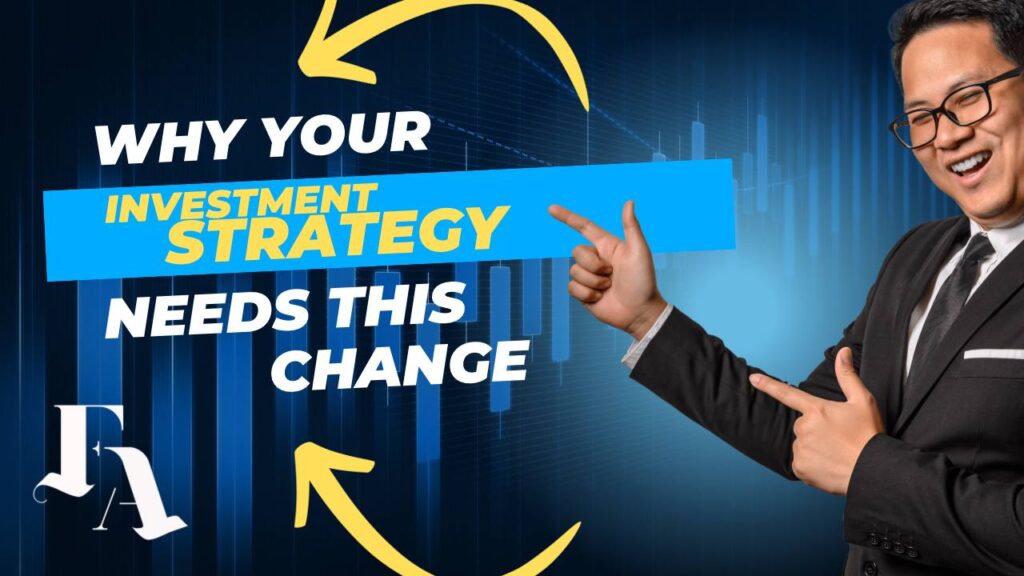
The investment world is rapidly evolving, and if you’re still sticking to the same old strategies from five, ten, or even twenty years ago, you might be setting yourself up for mediocrity—or worse, failure. Take a moment and think about the greatest shifts in financial history. Remember the dot-com bubble? The 2008 financial crash? What about the rise of cryptocurrencies and NFTs? Those who saw these shifts early, like Peter Thiel betting on Facebook or Warren Buffett shifting towards tech after decades of skepticism, reaped extraordinary rewards. On the other hand, those who clung to outdated principles were left in the dust. The key takeaway? Adapting your investment strategy is not just an option—it’s a necessity.
But what exactly does this change look like? Let me share a couple of stories that may shed light on this. Consider Ray Dalio, founder of Bridgewater Associates, one of the largest hedge funds in the world. Dalio built his empire on a principle-driven strategy, developing the famous “All Weather Portfolio” that balances risk across various asset classes. But here’s the catch—Dalio didn’t just stick to this blueprint forever. In 2008, while everyone else was panicking during the financial crisis, he tweaked his strategy by doubling down on principles of diversification and dynamic allocation, creating a robust system that not only survived the storm but thrived in its wake. The result? A $15 billion profit during the crisis when many others lost it all. The lesson here is that success isn’t about finding a single “winning formula” and riding it forever—it’s about constant, calculated evolution.
And it’s not just the veterans—new players are redefining the game with strategies that blend traditional wisdom with cutting-edge innovation. Take Cathie Wood of ARK Invest, whose high-conviction, thematic investing in disruptive technologies catapulted her to fame. While critics called her “reckless” for betting big on companies like Tesla when they were considered speculative, her approach challenged the norms, arguing that exponential growth potential in areas like AI, genomics, and blockchain deserves heavy weighting even at the cost of short-term volatility. Her willingness to embrace calculated risk and swim against the current is a perfect example of why simply playing it safe and sticking to the “tried and true” no longer cuts it. The modern investment landscape rewards those with the courage and insight to think differently—and those who adapt before it’s too late.
Even in the world of real estate, where conventional wisdom has often preached location, location, location—new strategies are emerging. Grant Cardone, for example, shifted his approach by focusing on multifamily properties, scaling his investments into a $4 billion portfolio by targeting value-add opportunities in emerging markets rather than playing it safe in established metropolitan centers. Cardone realized that the demographic shift towards smaller cities and the flexibility offered by remote work created new investment hot spots far from the traditional hubs. He adjusted, and while others hesitated, he seized the opportunity, turning an unconventional strategy into a massive competitive advantage.
So what does this mean for you? If you’re an entrepreneur, investor, or businessperson looking to stay ahead in this increasingly complex financial environment, you need to start rethinking how you approach your portfolio—whether it’s in stocks, real estate, or any other asset class. Diversification alone isn’t enough anymore; it’s the dynamic reallocation, a keen understanding of emerging trends, and an unwavering willingness to pivot that will define the future winners. The old models of asset management focused too much on fixed allocations and historical performance. But as we’ve seen, historical performance is no longer a reliable predictor when the rules of the game keep changing.
And let’s not forget the power of global markets—regional focus is becoming a limitation. Investors like George Soros made fortunes by identifying macroeconomic trends and moving capital across borders, understanding that the best opportunities aren’t confined to any one country. With the rise of fintech, fractional ownership, and tokenization, it’s easier than ever to gain exposure to growth markets worldwide. Ignoring this global shift is equivalent to missing out on entire oceans of untapped potential, while those who embrace it are setting themselves up for exponential returns. The idea is to think of your investment strategy as a living, breathing organism—constantly evolving, growing, and adapting.
You might be wondering, “But how do I know when it’s time to pivot?” Well, that’s the billion-dollar question, isn’t it? The best investors are those who not only spot the trends but act on them decisively. And this is where the true value lies—not just in analysis but in execution. It’s not enough to recognize that AI, green energy, or biotech might be the next big thing—you need to position yourself strategically and be ready to ride the wave before everyone else catches on. It’s about developing the foresight to anticipate shifts before they become obvious, just like how Jeff Bezos foresaw the rise of e-commerce in the early 90s or how Mark Cuban predicted the digital revolution during the birth of the internet. These visionaries didn’t just see the trend—they acted on it, and they did so when it was still contrarian and risky.
Now, the million-dollar question for you is: what’s the next pivot your investment strategy needs? What emerging trends are you not paying attention to that could be the key to unlocking your next level of wealth? The window of opportunity doesn’t stay open forever, and by the time the mainstream catches on, the exponential returns might already be gone. The investment landscape is like a chessboard—those who wait too long to make their move often find themselves checkmated by those who saw several moves ahead. What’s your next move? Let’s explore it together in the next video, where I’ll dive deeper into the specific steps you can take to future-proof your portfolio and stay ahead of the curve. You won’t want to miss this—trust me, the next big shift is already happening, and it’s time to be a part of it.
